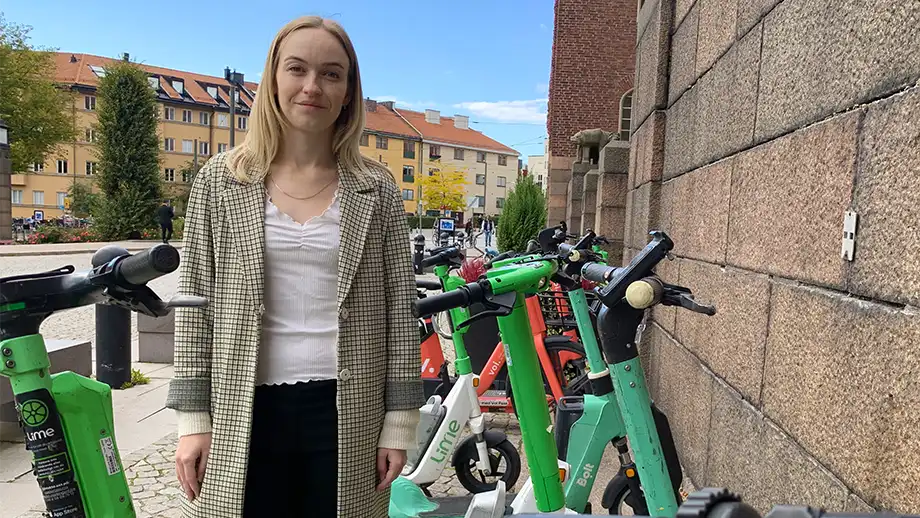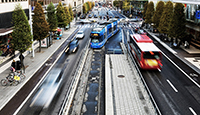Running late? New parking rules make shared e-scooters less convenient

Commuters trying to beat the clock account for nearly one third of shared electric scooter trips on a typical workday morning, recent research indicates. But reliance on these vehicles can be dampened when cities don’t provide enough parking near transit hubs, according to a new study.
In a recent study, 60 percent of electric scooter users in two major cities, Stockholm and Malmö, said they used shared electric scooters less frequently after parking regulations were instituted in 2022. The most consistent reason given was the increased distance they have to walk as a result of a national policy requiring riders to park in the newly-designated zones or bike racks.
Boel Berg Wincent , a researcher at KTH Royal Institute of Technology, says the policy’s aim was to reduce sidewalk clutter and improve accessibility. But one unintended outcome was the way it reshaped commuters attitudes about combining e-scooters with mass transit, an example of the growing “micromobility” trend.
A longer walk
In an online survey with more than 1,000 respondents, more than 80 percent of shared e-scooter users in both cities said they had to walk farther to find or to park around bus and train stations. About 40 percent said their travel times had increased since the regulations took effect.
Berg Wincent say these longer distances—and the time required to find parking—appeared to undermine the convenience of shared e-scooters, which are often chosen for their door-to-door utility.
Earlier research by Berg Wincent and her team found a significant portion of shared e-scooter trips begin near public transport hubs but end elsewhere, indicating that e-scooters are often used to complete the “last mile” of a journey—especially when buses or trains are delayed.
Both back-up and bridge
A substantial portion of trips appear to involve people hurrying to avoid arriving late for work or class. “About 30 percent of weekday morning trips end in the last 10 to 15 minutes before the hour, that is, the peaks before lectures, exams or work start times,” she says.
As both a backup and a bridge, this dual role of electric scooters suggests they are not merely replacing walking or cycling, but actively complementing public transport systems, the research shows.
The study highlights the need for planning and thoughtful design for e-scooter parking, Berg Wincent says. That is, more density of spaces, and closer to transit hubs. She says that despite the results, the city of Stockholm was on the right track in its intentions. It quickly create parking spaces close to transit hubs in anticipation of the new regulations.
“They were aiming for higher parking density, so this study confirms their strategy was right,” she says.
David Callahan (callahan (at) kth.se)
For more information, contact Boel Berg Wincent, boelw (at) kth.se

